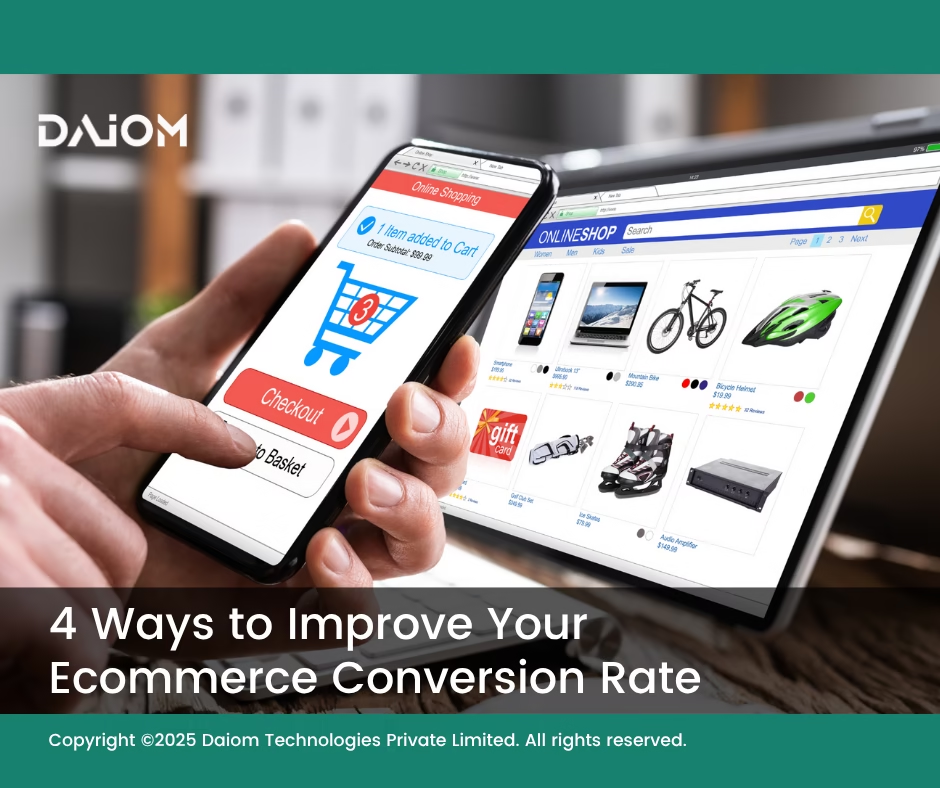While many brands focus heavily on attracting visitors, there’s a crucial piece often overlooked.
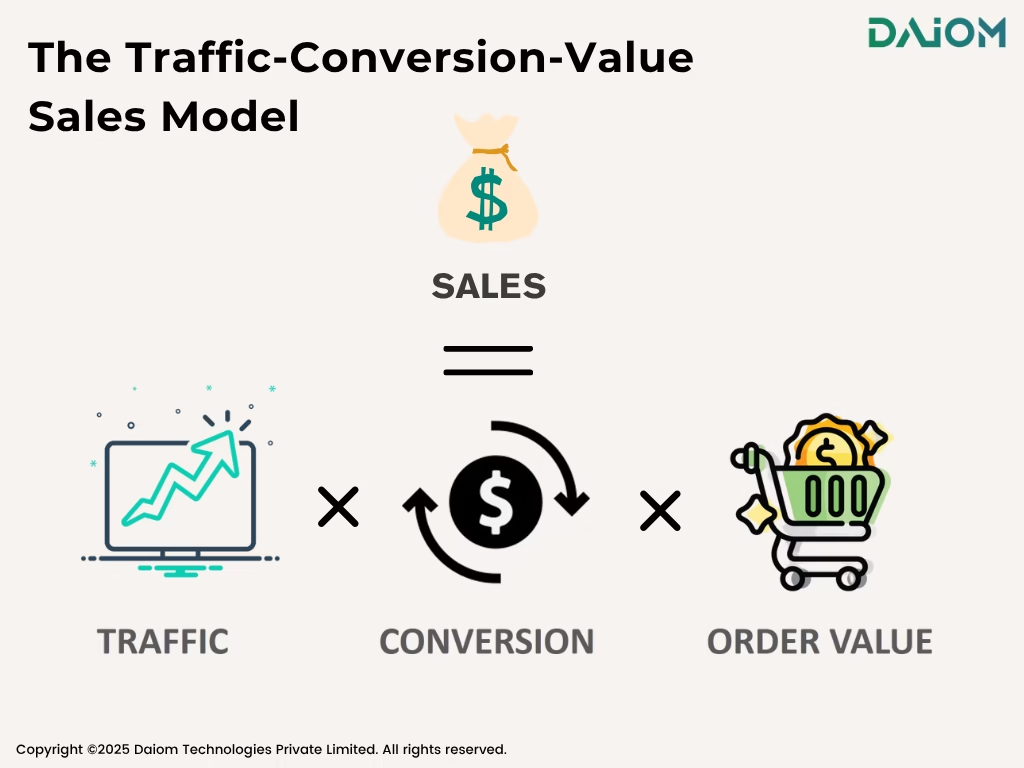
Brands spend a lot on driving traffic, but often ignore conversion—which is where real growth lies. And unlike traffic, conversion isn’t a one-time fix; it needs to be reinvented again and again with modern MarTech solutions to cater to evolving Customer needs/preferences.
Read more – Ultimate MarTech Guide for Omni Channel Businesses
Marketing costs are rising, and getting traffic is becoming more expensive, something brands can’t easily influence. To balance this, brands should focus on improving their conversion funnel—making the most of the visitors they get by turning more of them into customers.
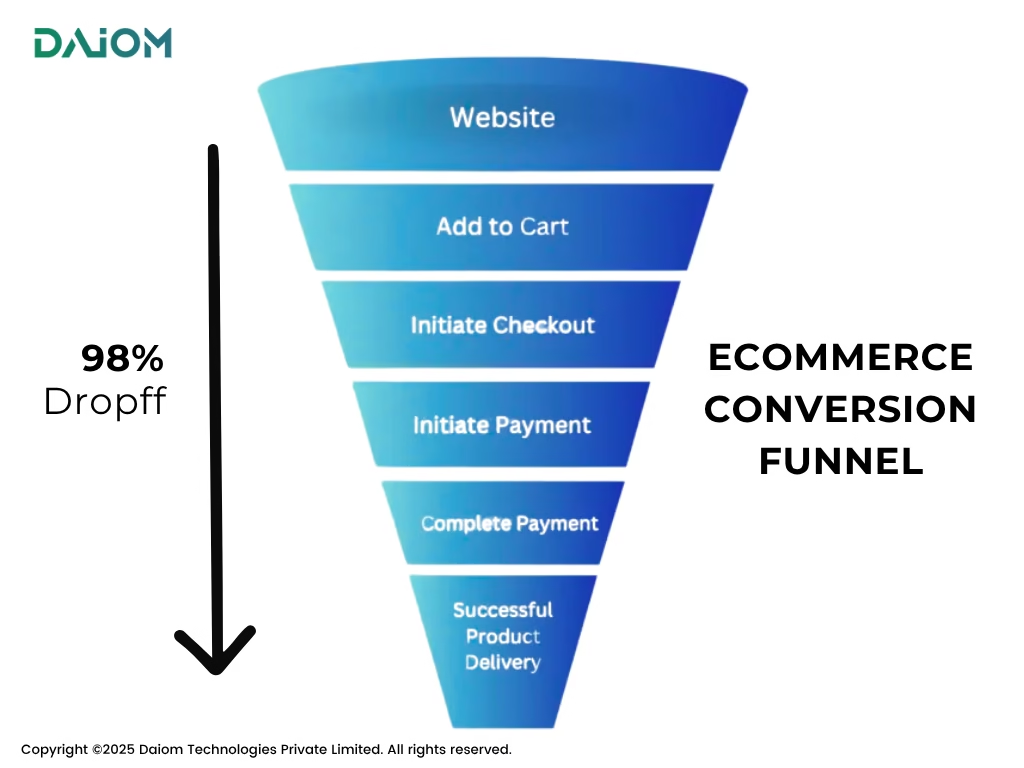
The real value comes when those visitors take action — like completing a purchase, signing up for a newsletter, or adding products to their cart. If they leave without doing anything, that traffic doesn’t drive growth.
This is why improving conversion rate is so important. It turns casual visitors into engaged customers — and that’s what builds long-term success in eCommerce.
So, how can you fix this?
Here are the simple and proven ways to boost eCommerce conversion rate and drive real business growth.
“Companies are great at getting people to their websites — they’re just not great at helping them convert.”
– Bryan Eisenberg, Digital Marketing Pioneer
Table of Contents
1. Faster Checkout
Faster checkout has become essential for improving conversions, especially for D2C companies. It all began with Amazon’s one-click checkout, which saved payment and delivery details to simplify repeat purchases.
Today, tools like GoKwik, Razorpay, MagicCheckout, and Shopflo bring similar one-click checkout experiences to D2C brands.
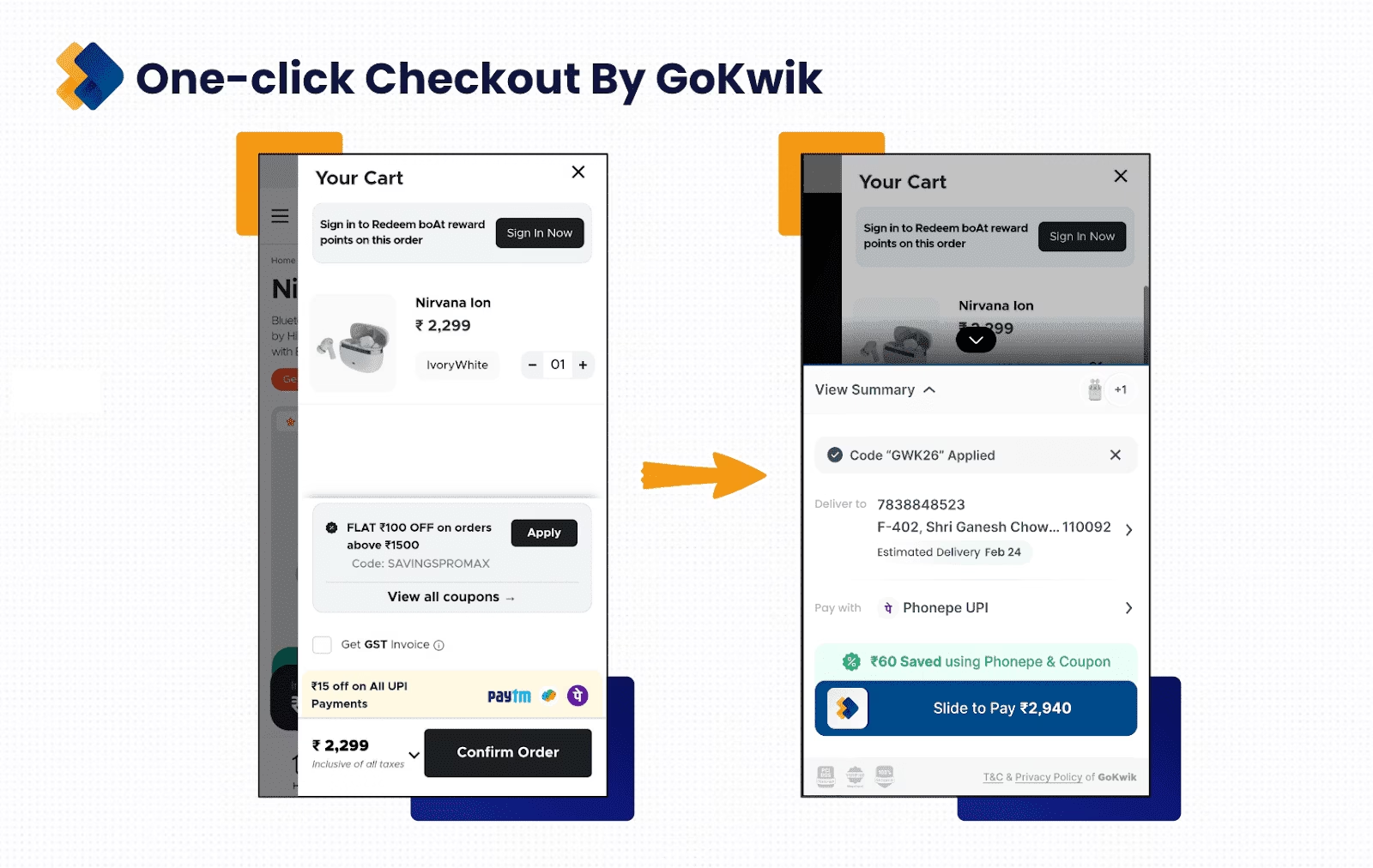
These tools securely store customer data across websites, enabling faster, frictionless purchases. Among our clients, using these faster checkout tools has led to a 15–20% increase in conversions by removing last-step friction.
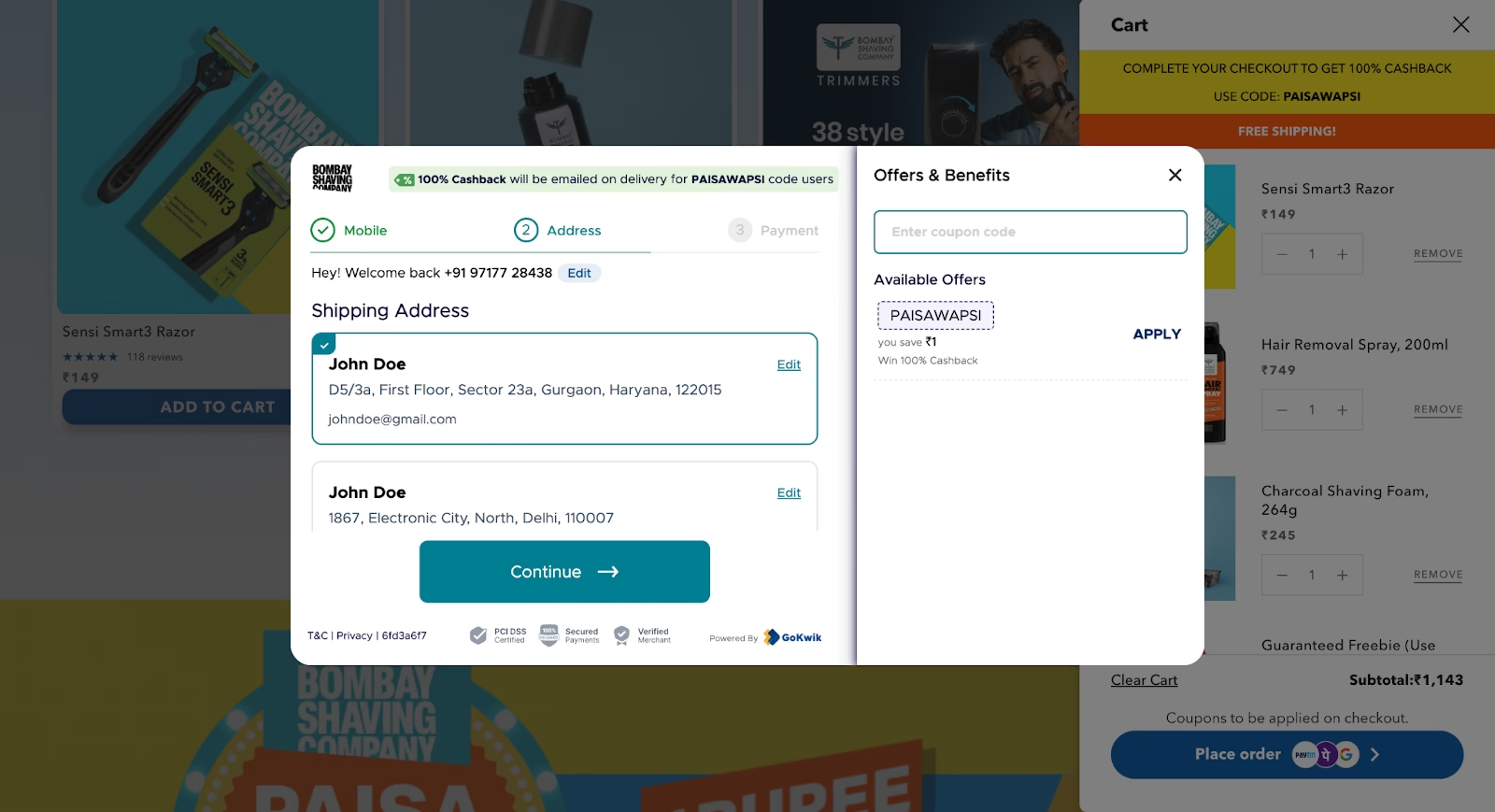
1.1 How to Implement It?
Implementing a frictionless and fast checkout experience can dramatically improve your conversion rates.
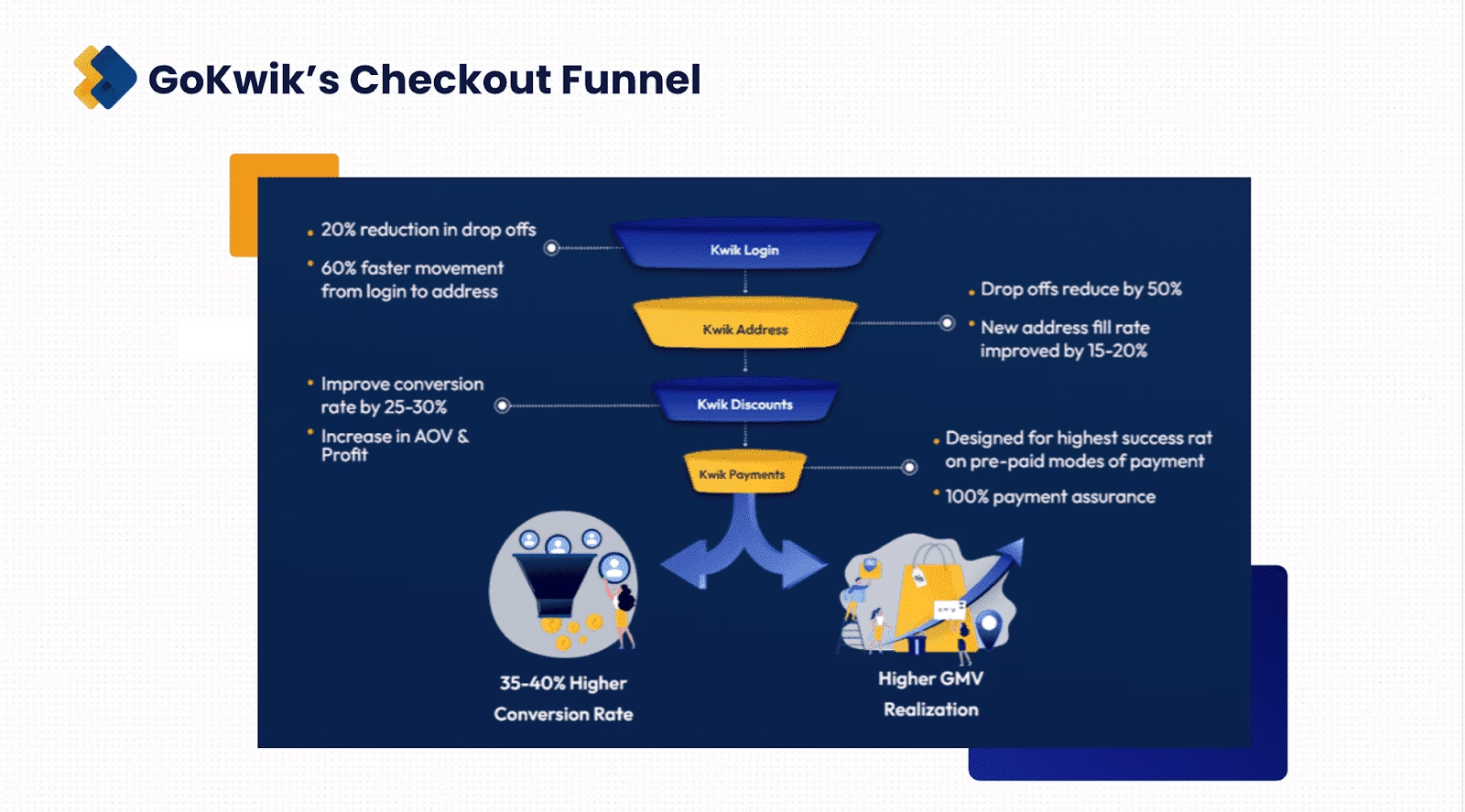
You can do it by:
- Streamlining form fields: Minimize the number of required fields to only essential information
- Enabling autofill: Implement 95% autofilled addresses to speed up the process and reduce errors
- Offering one-click checkout: Provide seamless and secure login options that remember customer information
- Optimizing for mobile: Ensure your checkout is fully responsive with touch-friendly buttons and simple navigation
- Displaying delivery estimates: Boost purchase confidence by showing when items will arrive
2. Strong Cart Abandonment Journeys
Cart abandonment represents the highest-intent drop-off in your conversion funnel.
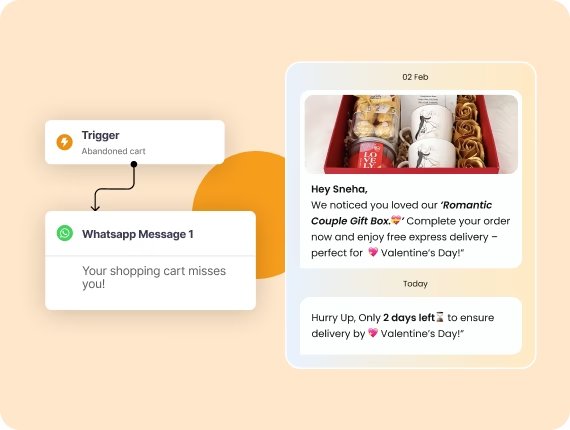
According to research, approximately 70% of checkouts result in abandonment, but companies can enjoy a 35% increase in conversion rates by implementing effective recovery strategies.
A strong cart abandonment recovery journey is essential for recapturing these potential sales:

- Build a Connected Communication Strategy: Customers often drop off at different stages of the journey. To keep them moving forward, engage them through connected channels like WhatsApp, RCS, SMS, and email automation. A strong MarTech stack makes this seamless—automating campaigns, syncing data, and scaling engagement.
- Adopt a Sequential Contact Strategy: Today, customers are active on multiple platforms, and a layered messaging approach works best. Start with a WhatsApp message. If undelivered, retry after an hour. Still no delivery can make you trigger a backup SMS. This ensures your message reaches customers without spamming them—maximizing reach and maintaining experience.
- Create a smart follow-up timeline: send the first message 1 hour after cart abandonment, the second after 8 hours, and the final after 24 hours. Tailor each message: start with just the product, then add offers and best-sellers, and finally spotlight top categories as exclusive deals. Use personalized recovery links that bring shoppers back to exactly where they left off.
3. Strategic Timing and Assisted Sales
In eCommerce, timing is everything—particularly when it comes to converting visitors who show high purchase intent. Research consistently shows that a customer’s intent to buy is strongest within the first 24 hours after they engage with your site.
However, the window is even narrower when it comes to immediate follow-up: if a visitor doesn’t complete their purchase within the first 1 to 2 hours, the chances of conversion begin to decline sharply.
This is where strategic timing and failover communication become crucial.
By promptly reaching out to visitors who drop off early in the purchase journey, you reinforce their interest and nudge them back toward completing the transaction. For lower-cost items, automated reminders via email, SMS, or WhatsApp can often be sufficient to re-engage these potential buyers.
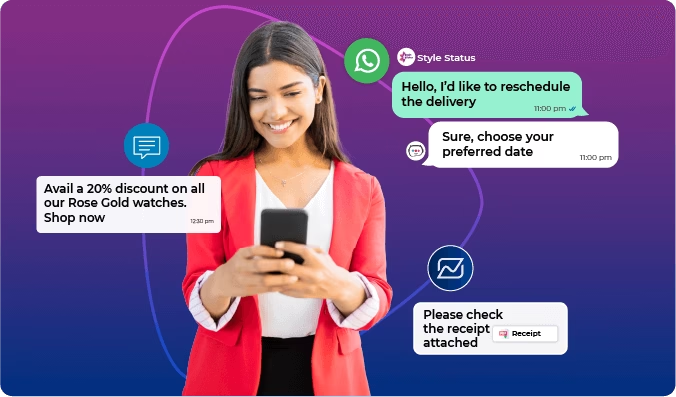
But for high-value products—typically those priced above $100—assisted sales become useful. These items usually require more consideration, research, and reassurance before customers commit to buying. During this critical decision-making phase, providing personalized support can dramatically improve conversion rates.

Assisted sales involve offering direct help through chats, calls, or personalized messages, allowing customers to ask questions, resolve doubts, and gain confidence in their purchase.
This approach is especially prevalent among omnichannel brands, which blend online and offline customer experiences to build stronger relationships and drive sales.
Leading companies like The Sleep Company, CaratLane, Lenskart, and others have successfully implemented assisted sales as a core part of their strategy, offering expert guidance during the buyer’s journey to significantly reduce drop-offs.
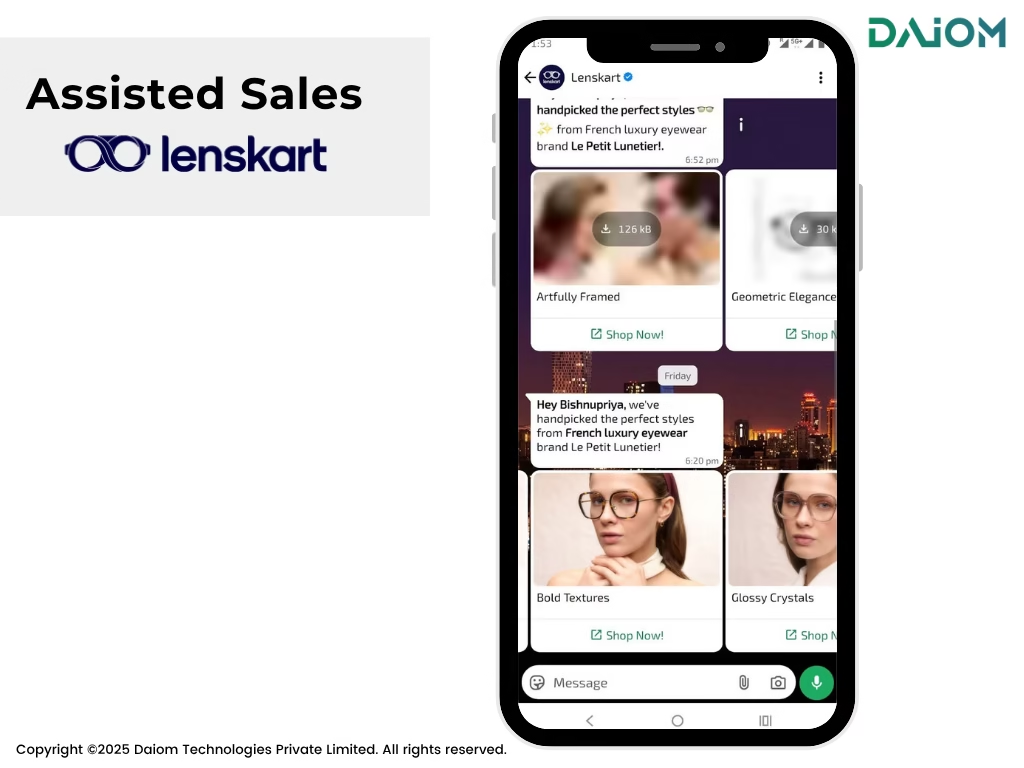
3.1 Why Strategic Timing and Assisted Sales Matter?
- High purchase intent peaks early: Buyers are most ready to commit within the first 24 hours—engage quickly to capture that intent.
- Failover communication reduces lost sales: If no purchase occurs within 1–2 hours, timely follow-ups can recapture interest.
- High-ticket items need human touch: Complex or expensive purchases benefit from expert assistance to build trust and answer questions.
- Omnichannel success stories: Brands integrating assisted sales see higher conversion rates and better customer satisfaction.
By combining strategic, timely follow-ups with personalized assisted sales, brands can effectively close more deals, especially for higher-priced products. This targeted approach replicates the confidence and support customers receive in physical stores, but delivered conveniently online—making it a powerful lever to boost revenue and customer loyalty.
4. Traffic and Conversion Analytics
The final component of a successful ecommerce conversion strategy involves a detailed analysis of your traffic sources and conversion metrics. Without proper measurement and optimization, even the best strategies will fall short of their potential.
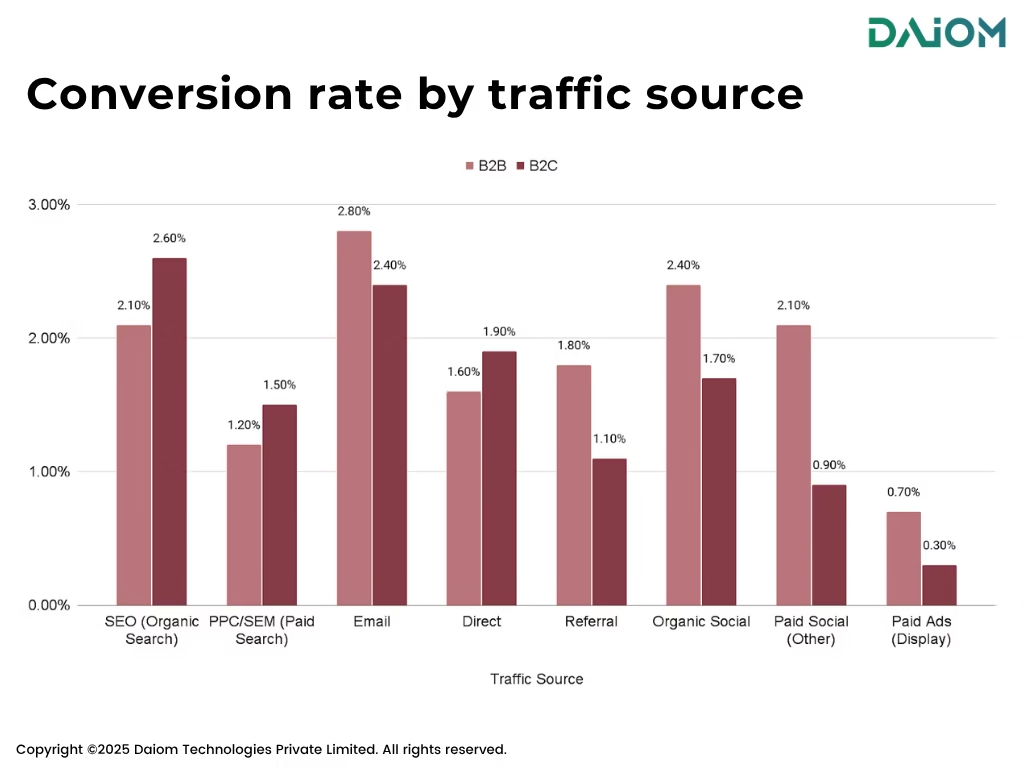
Here are the key areas to analyze:
- Channel Performance: Study traffic and conversion rates across different acquisition channels (organic search, paid, social, affiliate, CRM etc.)
- Campaign Effectiveness: Evaluate which specific campaigns drive both volume and quality traffic
- Funnel Efficiency: Track conversion rates at each stage of your sales funnel, identifying drop-off points (Lead Generation, Conversion, AOV, Revenue)
To improve your eCommerce conversion rate, take action based on performance insights: eliminate poor performers by cutting or redesigning underperforming campaigns, scale winners by investing more in high-ROI channels, refine your funnel to fix conversion drop-offs, and optimize traffic quality by attracting visitors with stronger purchase intent.
- Eliminate Poor Performers: Discontinue or redesign campaigns that consistently underperform
- Scale Winners: Allocate more resources to channels and campaigns yielding the highest ROI
- Refine Your Funnel: Address conversion bottlenecks with targeted improvements
- Traffic Quality Optimization: Focus on attracting visitors with higher purchase intent rather than raw traffic numbers
"You can’t just expect people to show up and buy — you have to guide them every step of the way."
– Neil Patel, Digital Marketing Expert
6. Conclusion
Improving your ecommerce conversion rate requires a multi-approach that addresses the entire customer journey.
The e-commerce landscape is increasingly competitive, but brands that master these strategies will be well-positioned to convert more visitors into loyal customers and maximize the return on their acquisition investments.
Start implementing these techniques today, and watch your conversion metrics transform in the months ahead.
If you’d like to discuss how we can assist with navigation and optimize your ecommerce conversion strategies, we’re happy to set up a consultation call. Feel free to reach out to us at alibha@daiom.in.
For more insights and updates on the latest trends, follow DAiOM!
Subscribe to our Newsletter!


